Evaluation of Urban Traffic Accidents Based on Pedestrian Landing Injury Risks
Abstract
:1. Introduction
2. Methodology
2.1. Parametric Research Proposal
2.2. Impact Conditions
2.3. Injury Criteria
3. Results
3.1. Pedestrian Landing Kinematics
3.2. Head Injury Caused by Ground Impact
3.3. Neck Injury Caused by Ground Impact
4. Discussions of Results
- For PRA 0°
- For PRAs 45°, 90°, 225°, and 270°
- For PRAs 135° and 180°
- For PRA 315°
5. Conclusions, Limitations, and Future Works
Author Contributions
Funding
Institutional Review Board Statement
Informed Consent Statement
Data Availability Statement
Acknowledgments
Conflicts of Interest
Appendix A

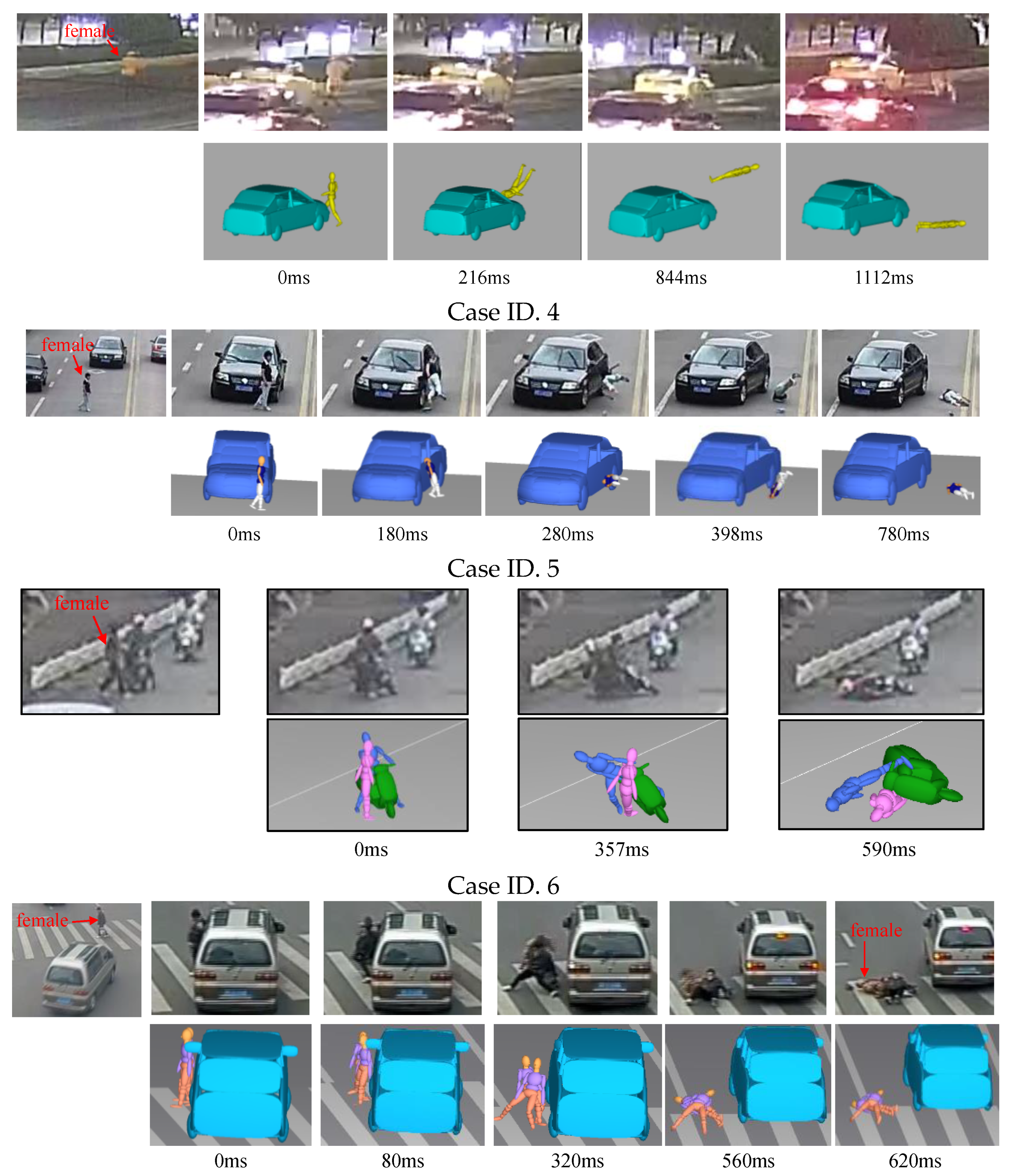
References
- WHO. Global Status Report on Road Safety 2018; World Health Organization: Geneva, Switzerland, 2018. [Google Scholar]
- Fan, Y.; Zou, X.; Wang, G.; Mu, D. Robust Adaptive Path Following Control Strategy for Underactuated Unmanned Surface Vehicles with Model Deviation and Actuator Saturation. Appl. Sci. 2022, 12, 2696. [Google Scholar] [CrossRef]
- Farroni, F.; Genovese, A.; Sakhnevych, A. Performance and Safety Enhancement Strategies in Vehicle Dynamics and Ground Contact. Appl. Sci. 2022, 12, 2034. [Google Scholar] [CrossRef]
- Oszczypała, M.; Ziółkowski, J.; Małachowski, J. Reliability Analysis of Military Vehicles Based on Censored Failures Data. Appl. Sci. 2022, 12, 2622. [Google Scholar] [CrossRef]
- Schuster, P.J.; Staines, B. Determination of bumper styling and engineering parameters to reduce pedestrian leg injuries. SAE Trans. 1998, 107, 830–840. [Google Scholar]
- McCarthy, M.; Simmons, I. Active pedestrian protection. In Proceedings of the 19th International Technical Conference on the Enhanced Safety of Vehicles, Washington, DC, USA, 6–9 June 2005. [Google Scholar]
- Wang, F.; Yin, J.; Hu, L.; Wang, M.; Liu, X.; Miller, K.; Wittek, A. Should Anthropometric Differences Between the Commonly Used Pedestrian Computational Biomechanics Models and Chinese Population Be Taken into Account When Predicting Pedestrian Head Kinematics and Injury in Vehicle Collisions in China? Accid. Anal. Prev. 2022, 173, 106718. [Google Scholar] [CrossRef]
- Wang, F.; Wu, J.; Hu, L.; Yu, C.; Wang, B.; Huang, X.; Miller, K.; Wittek, A. Evaluation of The Head Protection Effectiveness of Cyclist Helmets Using Full-Scale Computational Biomechanics Modelling of Cycling Accidents. J. Safety Res. 2022, 80, 109–134. [Google Scholar] [CrossRef]
- Inomata, Y.; Iwai, N.; Maeda, Y.; Kobayashi, S.; Okuyama, H.; Takahashi, N. Development of the pop-up engine hood for pedestrian head protection. In Proceedings of the 21st International Technical Conference on the Enhanced Safety of Vehicles (ESV 2009), Stuttgart, Germany, 15–18 June 2009. [Google Scholar]
- Huang, S.; Yang, J. Optimization of a Reversible Hood for Protecting a Pedestrian’s Head during Car Collisions. Accid. Anal. Prev. 2010, 42, 1136–1143. [Google Scholar] [CrossRef]
- Li, G.; Yang, J.; Simms, C. Safer Passenger Car Front Shapes for Pedestrians: A Computational Approach to Reduce Overall Pedestrian Injury Risk in Realistic Impact Scenarios. Accid. Anal. Prev. 2017, 100, 97–110. [Google Scholar] [CrossRef]
- Wang, B.; Wang, F.; Otte, D.; Han, Y.; Peng, Q. Effects of Passenger Car Front Profile and Human Factors on Pedestrian Lower Extremity Injury Risk Using German In-Depth Accident Data. Int. J. Crashworthiness 2019, 24, 163–170. [Google Scholar] [CrossRef]
- Liu, Y.; Wan, X.; Xu, W.; Shi, L.; Bai, Z.; Wang, F. A Novel Approach to Investigate Effects of Front-End Structures on Injury Response of e-Bike Riders: Combining Monte Carlo Sampling, Automatic Operation, and Data Mining. Accid. Anal. Prev. 2022, 168, 106599. [Google Scholar] [CrossRef]
- Otte, D.; Pohlemann, T. Analysis and load assessment of secondary impact to adult pedestrians after car collisions on roads. In Proceedings of the IRCOBI Conference, Isle of Man, UK, 10–12 October 2001. [Google Scholar]
- Badea-Romero, A.; Lenard, J. Source of Head Injury for Pedestrians and Pedal Cyclists: Striking Vehicle or Road? Accid. Anal. Prev. 2013, 50, 1140–1150. [Google Scholar] [CrossRef] [Green Version]
- Shi, L.; Han, Y.; Huang, H.; Davidsson, J.; Thomson, R. Evaluation of Injury Thresholds for Predicting Severe Head Injuries in Vulnerable Road Users Resulting from Ground Impact via Detailed Accident Reconstructions. Biomech. Modeling Mechanobiol. 2020, 19, 1845–1863. [Google Scholar] [CrossRef]
- Kendall, R.; Meissner, M.; Crandall, J. The Causes of Head Injury in Vehicle-Pedestrian Impacts: Comparing the Relative Danger of Vehicle and Road Surface; SAE Technical Paper 1; SAE: Warrendale, PA, USA, 2006. [Google Scholar]
- Simms, C.K.; Ormond, T.; Wood, D.P. The influence of vehicle shape on pedestrian ground contact mechanisms. In Proceedings of the IRCOBI Conference, Krakow, Poland, 14–16 September 2011. [Google Scholar]
- Crocetta, G.; Piantini, S.; Pierini, M.; Simms, C. The Influence of Vehicle Front-End Design on Pedestrian Ground Impact. Accid. Anal. Prev. 2015, 79, 56–69. [Google Scholar] [CrossRef]
- Guillaume, A.; Hermitte, T.; Hervé, V.; Fricheteau, R. Car or ground: Which causes more pedestrian injuries? In Proceedings of the 24th International Technical Conference on the Enhanced Safety of Vehicles (ESV) , Gothenburg, Sweden, 8–11 June 2015. [Google Scholar]
- Shi, L.; Han, Y.; Huang, H.; Li, Q.; Wang, B.; Mizuno, K. Analysis of Pedestrian-to-Ground Impact Injury Risk in Vehicle-to-Pedestrian Collisions Based on Rotation Angles. J. Saf. Res. 2018, 64, 37–47. [Google Scholar] [CrossRef]
- Shi, L.; Han, Y.; Huang, H.; He, W.; Wang, F.; Wang, B. Effects of Vehicle Front-End Safety Countermeasures on Pedestrian Head Injury Risk during Ground Impact. Proc. Inst. Mech. Eng. Part D J. Automob. Eng. 2019, 233, 3588–3599. [Google Scholar] [CrossRef]
- Shang, S.; Otte, D.; Li, G.; Simms, C. Detailed Assessment of Pedestrian Ground Contact Injuries Observed from In-Depth Accident Data. Accid. Anal. Prev. 2018, 110, 9–17. [Google Scholar] [CrossRef]
- Shang, S.; Masson, C.; Llari, M.; Py, M.; Ferrand, Q.; Arnoux, P.-J.; Simms, C. The Predictive Capacity of the MADYMO Ellipsoid Pedestrian Model for Pedestrian Ground Contact Kinematics and Injury Evaluation. Accid. Anal. Prev. 2021, 149, 105803. [Google Scholar] [CrossRef]
- Han, Y.; Li, Q.; Wang, F.; Wang, B.; Mizuno, K.; Zhou, Q. Analysis of Pedestrian Kinematics and Ground Impact in Traffic Accidents Using Video Records. Int. J. Crashworthiness 2019, 24, 211–220. [Google Scholar] [CrossRef]
- Zou, T.; Shang, S.; Simms, C. Potential Benefits of Controlled Vehicle Braking to Reduce Pedestrian Ground Contact Injuries. Accid. Anal. Prev. 2019, 129, 94–107. [Google Scholar] [CrossRef]
- Zou, T.; Liu, Q.; Zha, A.; Simms, C.; Chen, T. New Observations from Real-World Vehicle-Pedestrian Collisions in Reducing Ground Related Injury by Controlling Vehicle Braking. Int. J. Crashworthiness 2022, 27, 614–631. [Google Scholar] [CrossRef]
- Simms, C.K.; Wood, D.P. Effects of Pre-Impact Pedestrian Position and Motion on Kinematics and Injuries from Vehicle and Ground Contact. Int. J. Crashworthiness 2006, 11, 345–355. [Google Scholar] [CrossRef]
- Shang, S.; Masson, C.; Teeling, D.; Py, M.; Ferrand, Q.; Arnoux, P.-J.; Simms, C. Kinematics and Dynamics of Pedestrian Head Ground Contact: A Cadaver Study. Saf. Sci. 2020, 127, 104684. [Google Scholar] [CrossRef]
- Shi, L.; Han, Y.; Wang, B.; Huang, H. Effect of Vehicle Front-end Structure on Pedestrian-ground Impact Injury Risk. In Proceedings of the 14th International Forum of Automotive Traffic Safety, Changsha, China, 1 December 2017. [Google Scholar]
- Barczyk-Pawelec, K.; Bańkosz, Z.; Derlich, M. Body postures and asymmetries in frontal and transverse planes in the trunk area in table tennis players. Biol. Sport 2012, 29, 127–132. [Google Scholar] [CrossRef] [Green Version]
- Wieczorek, B.; Kukla, M.; Warguła, Ł. The Symmetric Nature of the Position Distribution of the Human Body Center of Gravity during Propelling Manual Wheelchairs with Innovative Propulsion Systems. Symmetry 2021, 13, 154. [Google Scholar] [CrossRef]
- Huang, Y.; Zhou, Q.; Koelper, C.; Li, Q.; Nie, B. Are Riders of Electric Two-Wheelers Safer than Bicyclists in Collisions with Motor Vehicles? Accid. Anal. Prev. 2020, 134, 105336. [Google Scholar] [CrossRef]
- Wood, D.; Simms, C. Coefficient of friction in pedestrian throw. Impact J. ITAI 2000, 9, 12–14. [Google Scholar]
- Hassanat, A. Furthest-Pair-Based Decision Trees: Experimental Results on Big Data Classification. Information 2018, 9, 284. [Google Scholar] [CrossRef] [Green Version]
- Tarawneh, A.S.; Chetverikov, D.; Hasanat, A.B.; Rahman, M.S. Deep Face Image Retrieval: A Comparative Study with Dictionary Learning. In Proceedings of the IEEE 10th International Conference on Information and Communication Systems, Irbid, Jordan, 11–13 June 2019. [Google Scholar]
- Moosavi, J.; Fathollahi-Fard, A.M.; Dulebenets, M.A. Supply chain disruption during the COVID-19 pandemic: Recognizing potential disruption management strategies. Int. J. Disaster Risk Reduct. 2022, 75, 102983. [Google Scholar] [CrossRef]
- Zamanikherad, M.; Montazeri, A.; Gheibi, M.; Fathollahi-Fard, A.M.; Behzadian, K. An efficient design of primary sedimentation tanks using a combination of the response surface, metaheuristic, and scenario building methods. Int. J. Environ. Sci. Technol. 2022. [Google Scholar] [CrossRef]
- Soleimani, H.; Chhetri, P.; Fathollahi-Fard, A.M.; Mirzapour Al-e-Hashem SM, J.; Shahparvari, S. Sustainable closed-loop supply chain with energy efficiency: Lagrangian relaxation, reformulations and heuristics. Ann. Oper. Res. 2022. [Google Scholar] [CrossRef]
- Seydanlou, P.; Jolai, F.; Tavakkoli-Moghaddam, R.; Fathollahi-Fard, A.M. A multi-objective optimization framework for a sustainable closed-loop supply chain network in the olive industry: Hybrid meta-heuristic algorithms. Expert Syst. Appl. 2022, 203, 117566. [Google Scholar] [CrossRef]
- Pasha, J.; Nwodu, A.L.; Fathollahi-Fard, A.M.; Tian, G.; Li, Z.; Wang, H.; Dulebenets, M.A. Exact and metaheuristic algorithms for the vehicle routing problem with a factory-in-a-box in multi-objective settings. Adv. Eng. Inform. 2022, 52, 101623. [Google Scholar] [CrossRef]

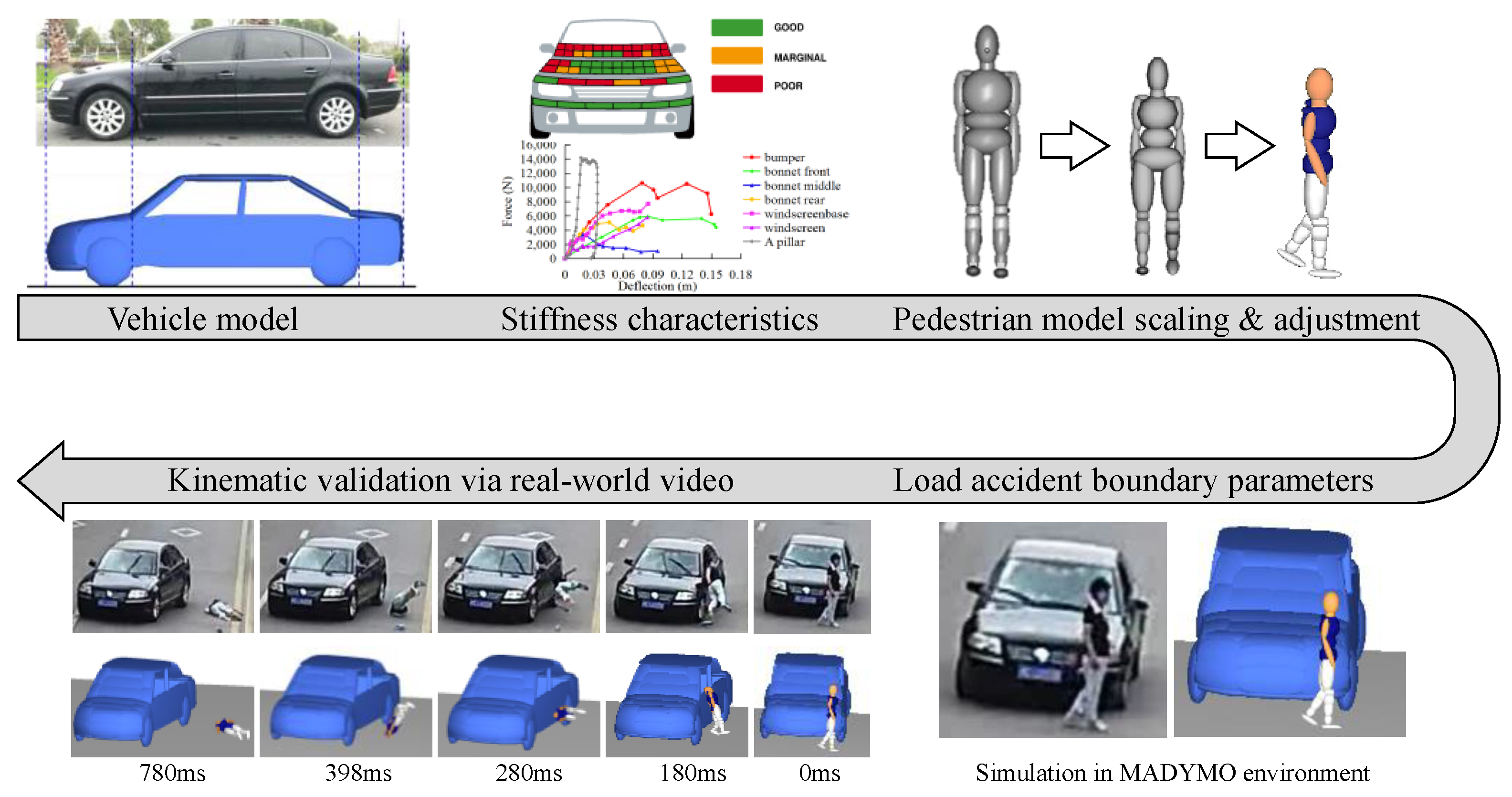
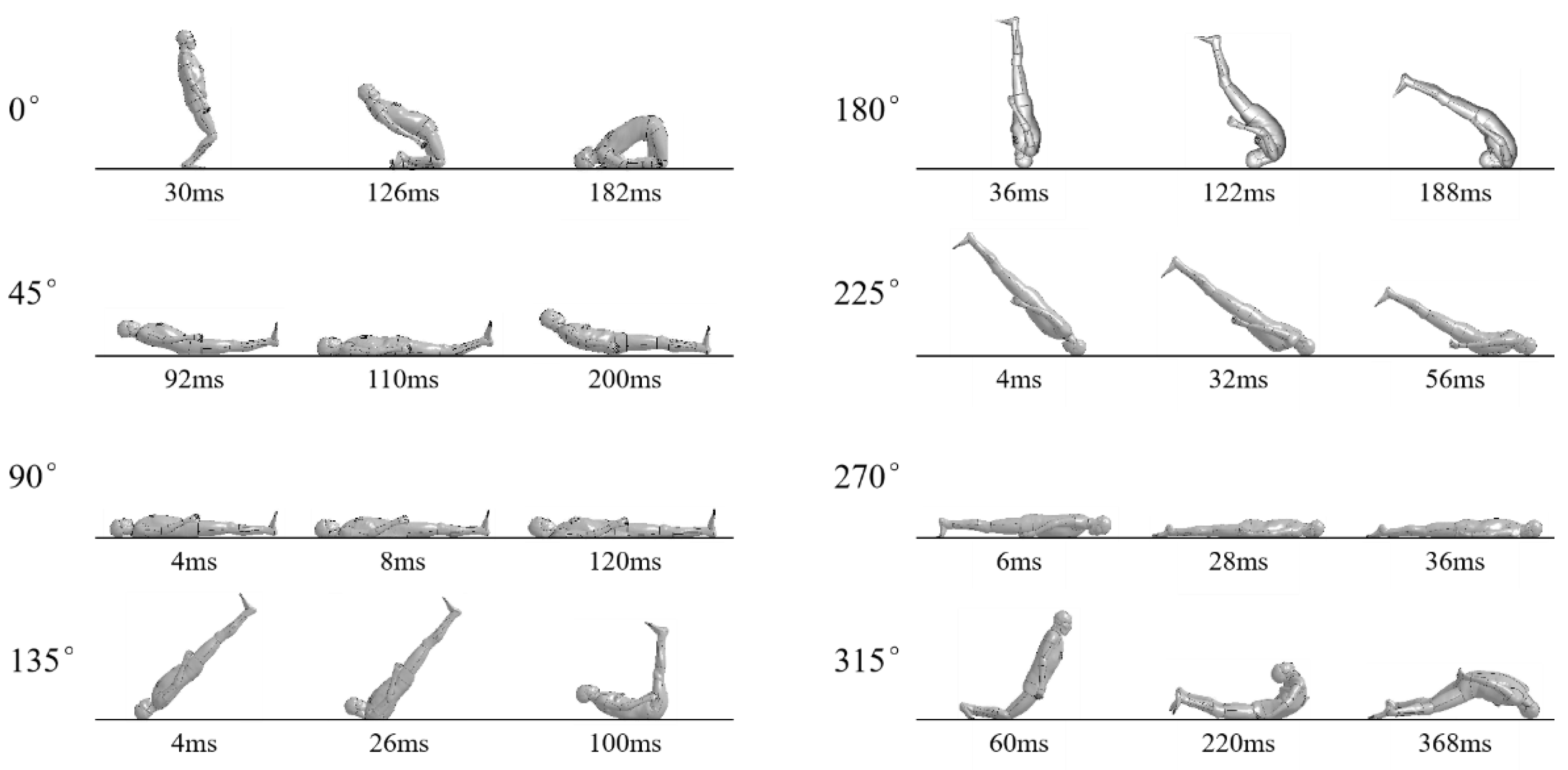
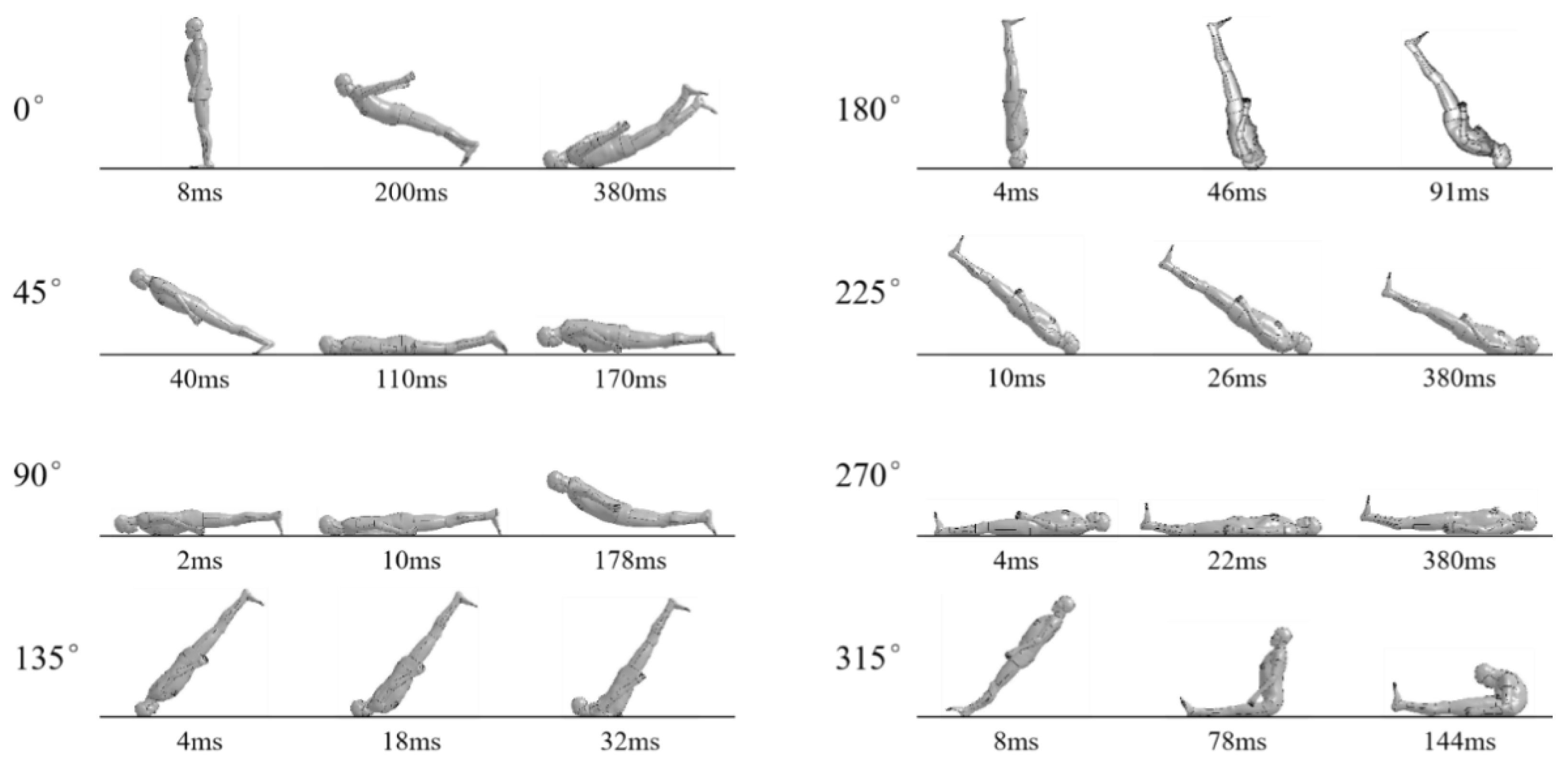
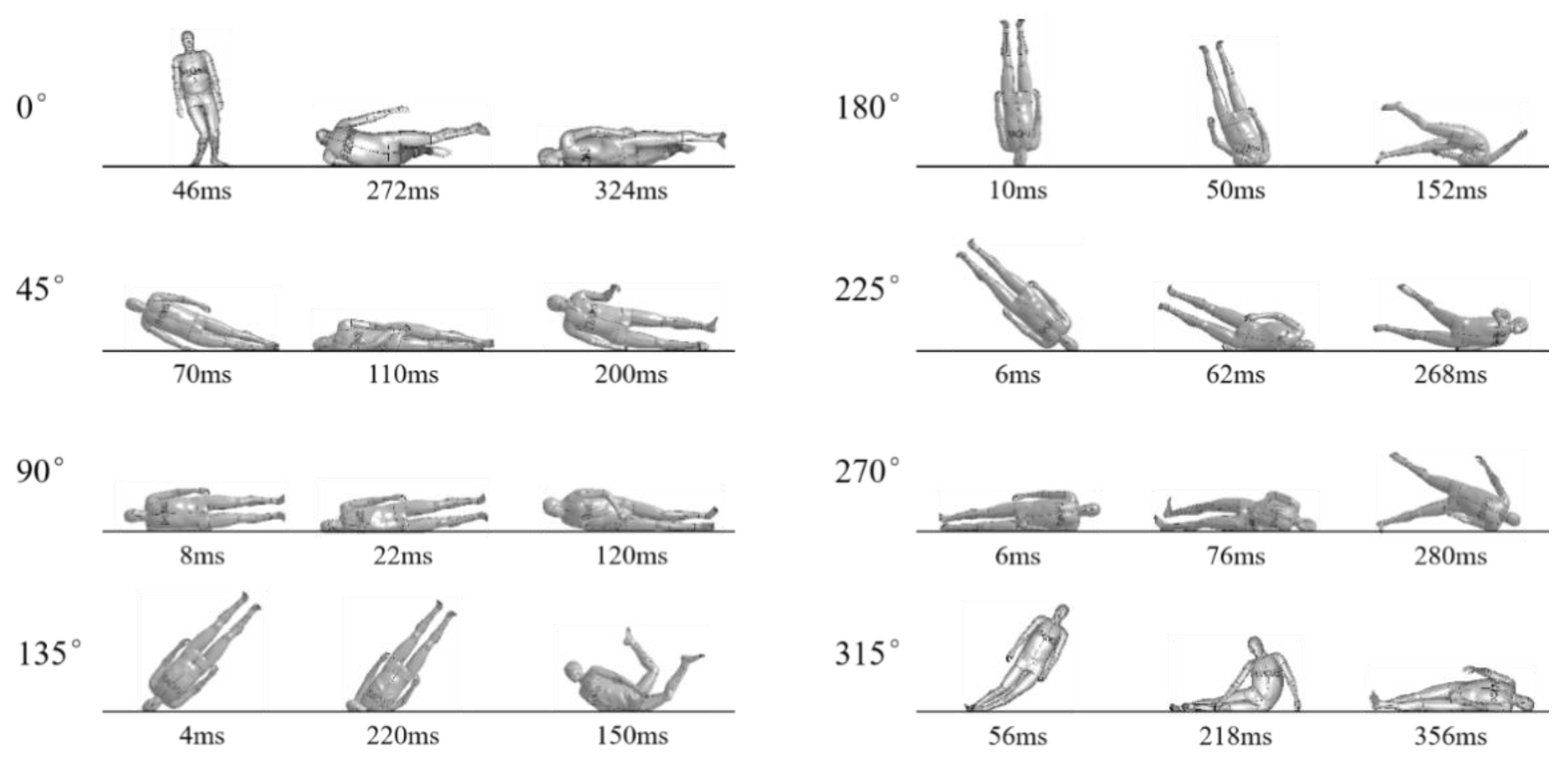
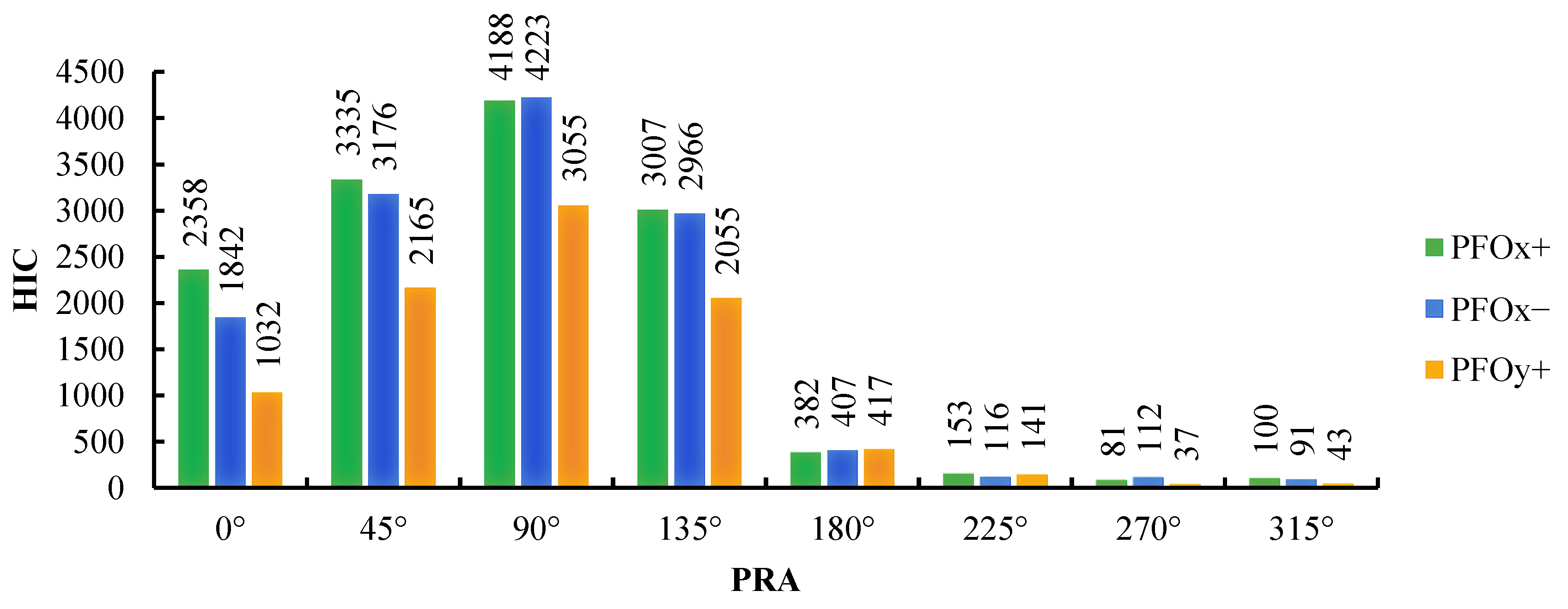
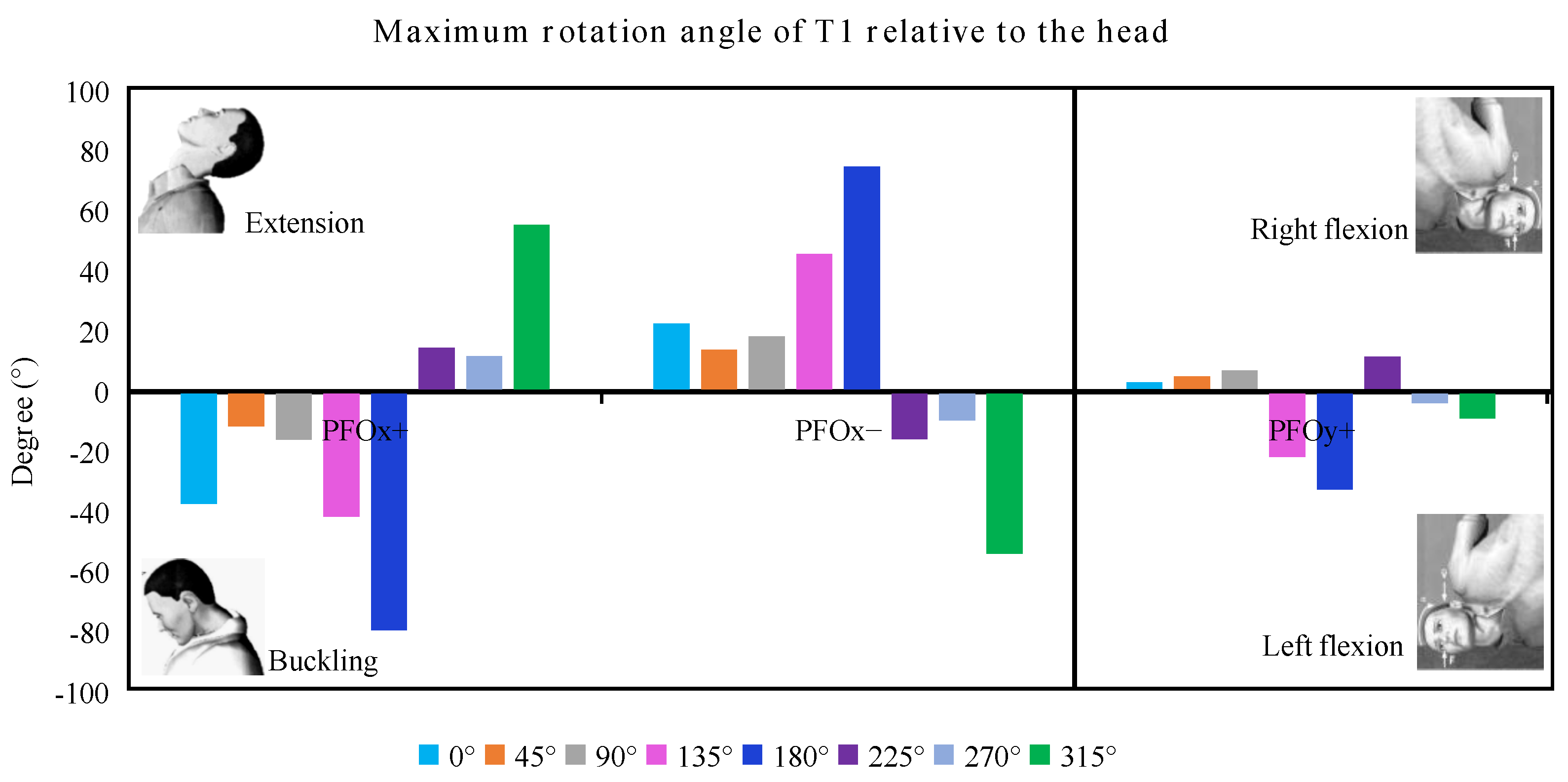
| Case ID | Vehicle Info | Pedestrian Info | Road and Environment Info | ||||||||
|---|---|---|---|---|---|---|---|---|---|---|---|
| Type | Velocity (km/h) | Brake before Collision | Gender | Age | Height (cm) | State | Location | Obstacle | Pavement | Humidity | |
| 1 | Sedan | 67 | No | Male | 36 | 179 | Running | Motor lane | None | Asphalt | Wet |
| 2 | Sedan | 90 | No | Female | 51 | 162 | Running | Motor lane | None | Asphalt | Wet |
| 3 | Sedan | 63 | Yes | Female | 37 | 164 | Running | Motor lane | None | Asphalt | Dry |
| 4 | Sedan | 29 | No | Female | 73 | 142 | Walking | Motor lane | None | Asphalt | Dry |
| 5 | E-bike | 31 | Yes | Female | 63 | 157 | Walking | Non-motor lane | None | Asphalt | Dry |
| 6 | MPV | 29 | No | Female | 79 | 158 | Walking | Crosswalk | None | Asphalt | Dry |
| Case ID | Final Position Error %: Reconstructed vs. Actual | Linear and Angular Velocity Components (2 ms before Body-to-Ground Contact) | ||||
|---|---|---|---|---|---|---|
| Pedestrian | Vehicle | Vx (m/s) | Vy (m/s) | Vz (m/s) | ωy (rad/s) | |
| 1 | 3.1% | 2.4% | 2.8 | −0.4 | −5.8 | 4.6 |
| 2 | 3.6% | 2.7% | 4.7 | 0.1 | −6.9 | 5.8 |
| 3 | 2.4% | 1.7% | 3.9 | 0.2 | −6.1 | 5.2 |
| 4 | 0.9% | 0.6% | 1.3 | −3.8 | −5.5 | 6.5 |
| 5 | 1.2% | 1.1% | 0.9 | −0.8 | −5.2 | 3.8 |
| 6 | 0.6% | 1.3% | 0.6 | −1.4 | −4.3 | 2.4 |
Publisher’s Note: MDPI stays neutral with regard to jurisdictional claims in published maps and institutional affiliations. |
© 2022 by the authors. Licensee MDPI, Basel, Switzerland. This article is an open access article distributed under the terms and conditions of the Creative Commons Attribution (CC BY) license (https://creativecommons.org/licenses/by/4.0/).
Share and Cite
Shi, L.; Liu, M.; Liu, Y.; Zhao, Q.; Cheng, K.; Zhang, H.; Fathollahi-Fard, A.M. Evaluation of Urban Traffic Accidents Based on Pedestrian Landing Injury Risks. Appl. Sci. 2022, 12, 6040. https://doi.org/10.3390/app12126040
Shi L, Liu M, Liu Y, Zhao Q, Cheng K, Zhang H, Fathollahi-Fard AM. Evaluation of Urban Traffic Accidents Based on Pedestrian Landing Injury Risks. Applied Sciences. 2022; 12(12):6040. https://doi.org/10.3390/app12126040
Chicago/Turabian StyleShi, Liangliang, Ming Liu, Yu Liu, Qingjiang Zhao, Kuo Cheng, Honghao Zhang, and Amir M. Fathollahi-Fard. 2022. "Evaluation of Urban Traffic Accidents Based on Pedestrian Landing Injury Risks" Applied Sciences 12, no. 12: 6040. https://doi.org/10.3390/app12126040
APA StyleShi, L., Liu, M., Liu, Y., Zhao, Q., Cheng, K., Zhang, H., & Fathollahi-Fard, A. M. (2022). Evaluation of Urban Traffic Accidents Based on Pedestrian Landing Injury Risks. Applied Sciences, 12(12), 6040. https://doi.org/10.3390/app12126040








